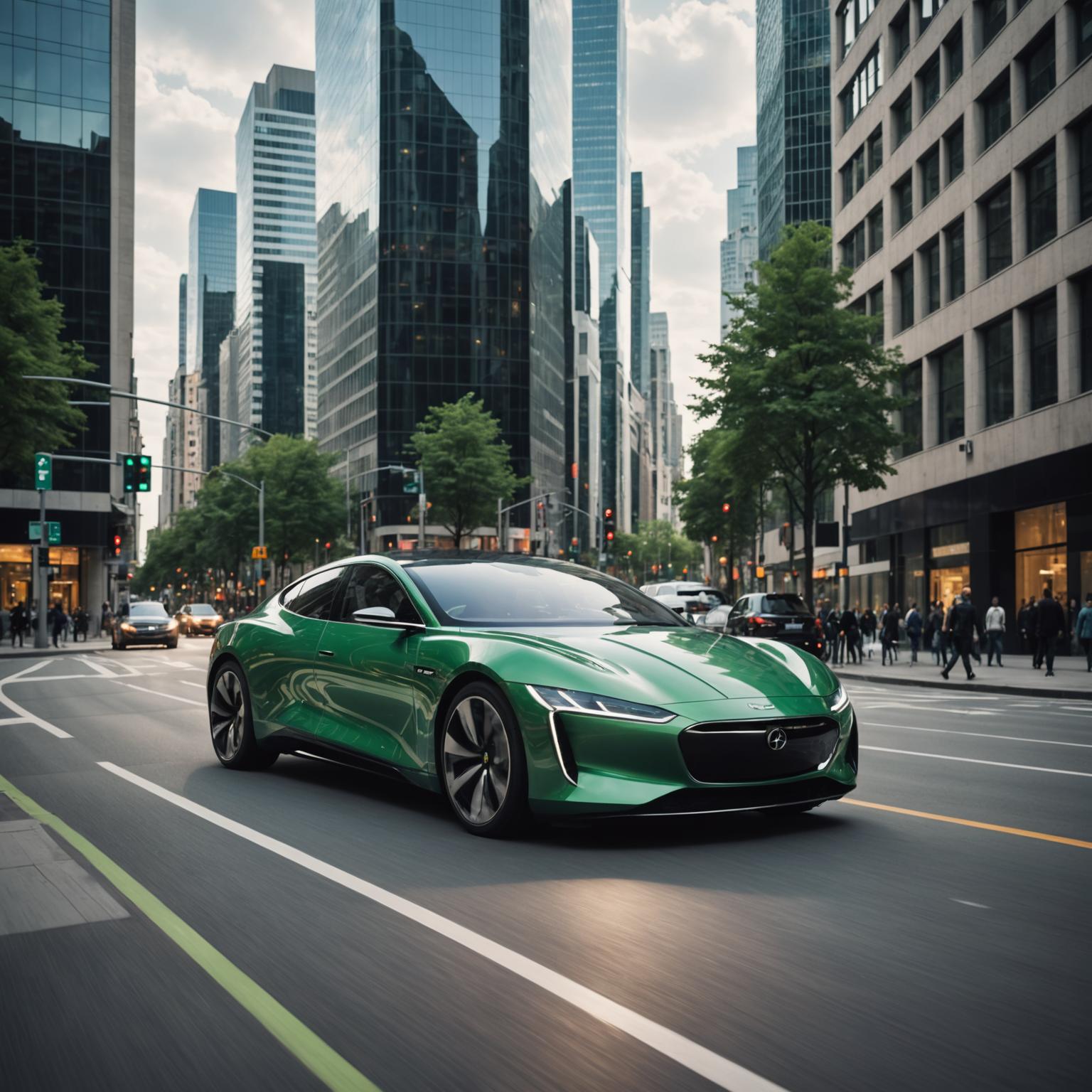Understanding Automotive Blind Spot Radar
Modern driving demands safety measures that keep pace with innovation, and automotive blind spot radar systems are at the forefront of this evolution. As vehicles become increasingly advanced, the need for comprehensive awareness of surroundings has grown exponentially. Blind spot detection technology plays a crucial role by alerting drivers to unseen obstacles, enhancing safety for all road users.
The Role of ADAS Radar Systems in Shaping Automotive Safety
Advanced Driver Assistance Systems (ADAS) are revolutionizing the way we think about automotive safety, and radar systems play a crucial role in this transformation. These systems leverage high-frequency radar, typically in the 77 GHz frequency band, to provide a variety of safety features, from blind-spot detection to lane-keeping assistance, adaptive cruise control, and emergency braking. Radar is especially effective in challenging weather conditions, offering an unparalleled ability to "see" through fog, rain, or snow, which can otherwise compromise the effectiveness of traditional sensors like cameras or ultrasonic systems. By enhancing situational awareness and response times, ADAS radar systems are setting a new standard for vehicle safety, preventing accidents and improving the overall driving experience.
The radar-based solutions from Linpowave exemplify the cutting-edge technologies at the heart of ADAS, providing real-time responses to dynamic road conditions. These systems are designed to respond to the ever-changing environment around the vehicle, offering a level of accuracy and reliability that is essential in avoiding accidents and preventing collisions. By detecting objects in the vehicle’s vicinity—whether they are moving or stationary—ADAS radar systems enable safer lane changes, smoother navigation through traffic, and more reliable obstacle avoidance.
Hyundai S-Class 3.0: A Testament to Cutting-Edge Automotive Safety
The Hyundai S-Class 3.0 stands as a shining example of the future of automotive safety, integrating a sophisticated surround-sensor system that includes infrared, radar, and LIDAR technologies. This multimodal system creates a 360-degree protective bubble around the vehicle, providing enhanced situational awareness for both the driver and the vehicle’s automated systems. The vehicle continually scans its surroundings for potential hazards such as obstacles, pedestrians, and traffic flow changes, ensuring that it can respond proactively to any immediate threats. This approach moves beyond simply alerting the driver to potential dangers, instead helping the car make autonomous decisions in real-time.
The combination of these advanced sensing technologies enables the Hyundai S-Class 3.0 to seamlessly anticipate and respond to potential hazards, drastically reducing the likelihood of accidents. Its radar systems, for example, can detect vehicles in adjacent lanes that might not be visible through traditional mirrors or even through cameras, providing real-time blind spot monitoring that is both accurate and reliable. As the vehicle moves through complex traffic environments, it continuously processes and analyzes sensor data, making driving safer and more intuitive.
Solutions to Ameliorate Blind Spot Challenges
Blind spots have long been a significant safety concern for drivers, especially when changing lanes or merging onto highways. To address this issue, Linpowave and other industry leaders have developed robust blind spot detection systems that utilize millimeter-wave radar to overcome the limitations of traditional sensors. By effectively monitoring areas around the vehicle that are not visible to the driver, these systems alert the driver to any nearby vehicles, significantly reducing the risk of collision.
The radar technology in systems like those found in the Hyundai S-Class 3.0 works by continuously scanning areas adjacent to the vehicle, providing an extra layer of safety when driving in dense traffic. The real-time data from radar sensors can help the vehicle make proactive decisions—whether by warning the driver to slow down when changing lanes or by automatically steering the car back into its lane if a potential collision is detected. This seamless interaction between technology and human decision-making is at the heart of modern ADAS, helping drivers make more informed choices and driving with greater confidence.
These systems are an essential tool in enhancing road safety, offering not only collision prevention but also contributing to more intuitive driving experiences. In the context of smart cities, blind spot detection can become an even more integral part of the driving ecosystem, allowing for better communication between vehicles and infrastructure to avoid accidents and improve traffic flow.
The Future of Driving Excellence: Connectivity and Smart Infrastructure
The future of driving is not just about safer cars but about the integration of those cars into a broader connected ecosystem. The Hyundai S-Class 3.0 is a perfect example of how smart infrastructure and vehicles can work together to enhance safety and efficiency. The vehicle’s integration with smart city infrastructure and other connected vehicles creates a communication network that allows for dynamic route optimization and improved traffic management.
This level of connectivity enables the vehicle to communicate with traffic signals, road signs, and even other vehicles in real-time, optimizing its journey and reducing the likelihood of congestion, accidents, or delays. This interconnectedness not only improves the overall driving experience but also contributes to sustainable innovation, such as reducing fuel consumption through more efficient routes or minimizing emissions with optimized traffic flow.
In addition, the S-Class 3.0’s integration of cutting-edge ADAS technologies, including radar-based systems, plays a pivotal role in the car’s adaptive decision-making. Whether responding to an unexpected pedestrian crossing or adjusting to the flow of traffic, this advanced radar technology continuously provides the vehicle with up-to-date situational awareness that enables it to act autonomously or assist the driver in making the safest decisions possible.
Conclusion: A Safer, Smarter, and More Sustainable Future for Driving
Advanced Driver Assistance Systems, particularly radar technologies, are undeniably shaping the future of automotive safety and performance. Vehicles like the Hyundai S-Class 3.0 are leading the way, setting a new benchmark for vehicle safety, driver assistance, and smart connectivity. By addressing critical challenges such as blind spots and obstacle detection, ADAS radar systems offer drivers enhanced confidence and control on the road, reducing accidents and improving overall traffic safety.
Looking ahead, the integration of these technologies into smart city ecosystems will further enhance the driving experience, making it more efficient, sustainable, and safe. As radar systems and connected technologies continue to evolve, vehicles like the Hyundai S-Class 3.0 will remain at the forefront of automotive innovation, setting the stage for a future where cars are not just smart but seamlessly connected to the world around them.



